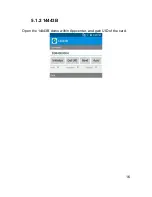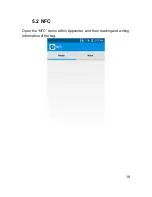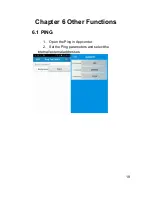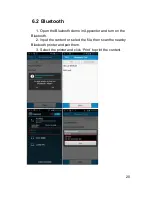
5
1.2
Precaution Before Using
Battery
Do not leave batteries unused for extended periods of
time, either in the product or in storage. When the battery has
been unused for 6 months, check the charge status and charge
or dispose of the battery as appropriate.
The typical estimated life of a Lithium-Ion battery is about
two to three years or 300 to 500 charge cycles, whichever
occurs first. One charge cycle is a period of use from fully
charged, to fully discharged, and fully recharged again. Use a
two to three year life expectancy for batteries that do not run
through complete charge cycles.
Rechargeable Lithium-Ion batteries have a limited life and
will gradually lose their capacity to hold a charge. This loss of
capacity (aging) is irreversible. As the battery loses capacity,
the length of time it will power the product (run time) decreases.
Lithium-Ion batteries continue to slowly discharge (self-
discharge) when not in use or while in storage. Routinely check
the battery’s charge status. The user manual typically includes
information on how to check battery status, as well as battery
charging instructions.
Observe and note the run time that a new fully-charged
battery provides for powering your product. Use the new battery
run time as a basis to compare run times for older batteries.
The run time of your battery will vary depending on the
product’s configuration and the applications that you run.
Routinely check the battery’s charge status.
Carefully monitor batteries that are approaching the end
of their estimated life.
Consider replacing the battery with a new one if you note
either of the following conditions:


































